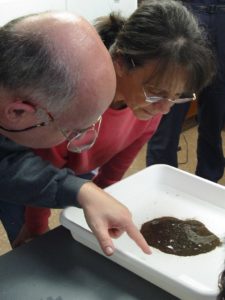At its core, Discover Life in America is a science and science education organization. However, no matter how solemn a duty this may appear to be, we are undergirded by the fascination and commitment of discovering previously unknown lifeforms in the Great Smoky Mountains National Park, and encouraging the same outside of its borders.
Click the link ABOVE to read the biodiversity report (2018)
The information in the Science and Research Section of the web site is targeted to support the scientific side of the All Taxa Biodiversity Inventory. It is also meant to encourage you to catch our vision of the research necessary for defining and documenting the Park’s magnificent biodiversity. This knowledge can only be made available, understood, and managed through the active stewardship of you and I, its citizen-owners.
THE SCIENTISTS
 To get the most out of the ATBI program, we must have a unique group of people called scientists. A scientist, in general, by definition, is one who is a worker in a field of science (such as biology, geology, engineering, agriculture, meteorology, hydrology, chemistry, etc.). But, in a living natural resources type of program, specifically … who are these science-oriented folks?
To get the most out of the ATBI program, we must have a unique group of people called scientists. A scientist, in general, by definition, is one who is a worker in a field of science (such as biology, geology, engineering, agriculture, meteorology, hydrology, chemistry, etc.). But, in a living natural resources type of program, specifically … who are these science-oriented folks?
In the realm of the ATBI, a scientist is an expert in a specific field of biology called taxonomy or systematics. Through many years of study, the taxonomist has come to know intimately, a specific group of organisms: be it, to name just a few, tree root bacteria, land snails, flower flies, fungi, ferns, wildflowers, snakes, rodents …
These men and women are the ones you call upon to identify newly-discovered life forms, and to verify the presence of many others. The Taxonomy Scientist may be found peering through a microscope, counting the number of sections that make up the antennae of an insect, or the number of lateral line scales on the side of a minnow: all leading to the identification of a specimen captured during an ATBI collection. These are also the experts that can inform the Park managers of a drop in the numbers of species (decrease in diversity), indicating possible habitat perturbation, a pollution problem, or a threat from invasive foreign species.


